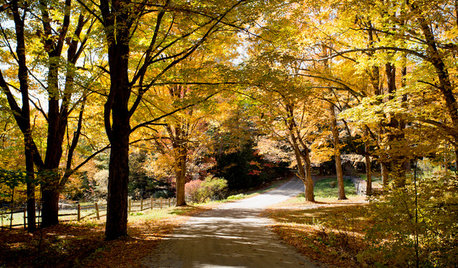I thought I had made my mind up on planting a variety of Maple hybrid (autumn blaze/glory/etc) here in this thread.
http://forums2.gardenweb.com/forums/load/trees/msg092216042524.html
But I just couldn't get the thoughts of having a tree for 10-15 years just to have it break/the bark crack/it just die on me. Plus at ONLY 40'-50' tall I was left wanting for something that would get bigger.
It seems to me these have a lot going for them. They grow quick, are hardy, have great fall color, are very sturdy and can also provide a good home for animals too. What am I missing???
I cant really remember how I got turned onto these specific Oaks but I just really like the thought of planting something that could possibly live 500 years, Autumn Blaze cant touch that!
SO what are the real differences between a Scarlet Oak (Quercus coccinea) and a Red Oak (Quercus Rubra) and if these are less favored for whatever reason you feel please elaborate.









Tn_Tree_Man
Brandon SmithOriginal Author
Related Professionals
Rossville Landscape Architects & Landscape Designers · South Elgin Landscape Architects & Landscape Designers · Newcastle Landscape Architects & Landscape Designers · Fort Hunt Landscape Contractors · Lakewood Landscape Contractors · Point Pleasant Landscape Contractors · Maplewood Landscape Contractors · North Hills Landscape Contractors · San Antonio Siding & Exteriors · Cave Spring Decks, Patios & Outdoor Enclosures · Portage Decks, Patios & Outdoor Enclosures · Rosemont Decks, Patios & Outdoor Enclosures · Tomball Decks, Patios & Outdoor Enclosures · Woodland Hills Decks, Patios & Outdoor Enclosures · Chesapeake Ranch Estates Stone, Pavers & Concreteken_adrian Adrian MI cold Z5
Brandon SmithOriginal Author
Tn_Tree_Man
Brandon SmithOriginal Author
arktrees
Toronado3800 Zone 6 St Louis
ken_adrian Adrian MI cold Z5